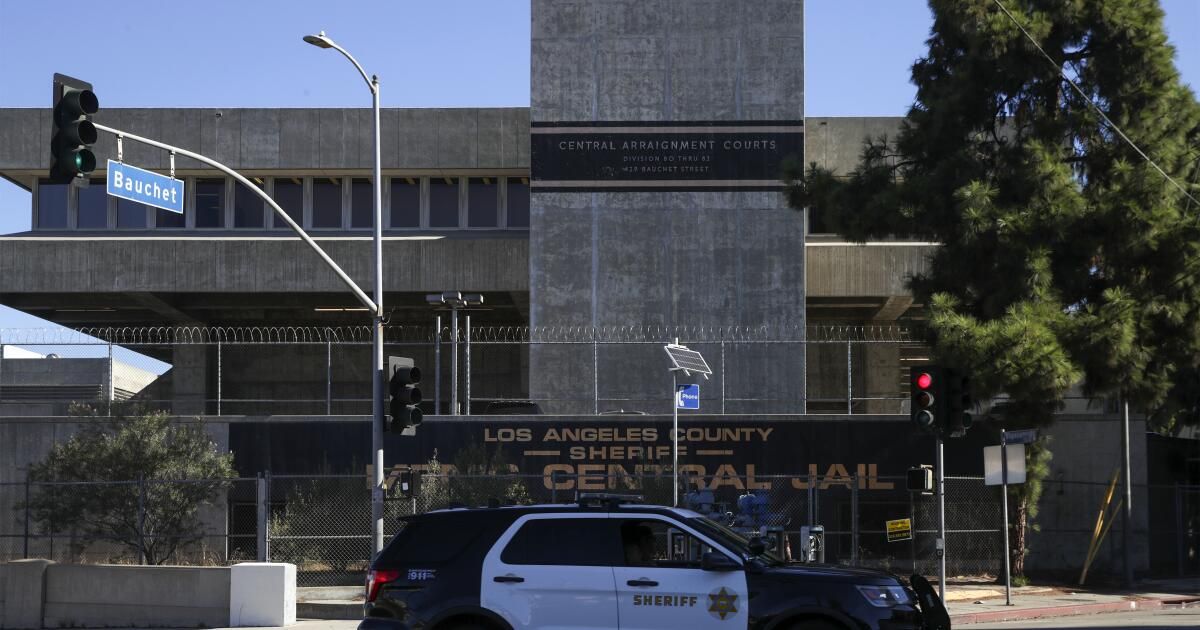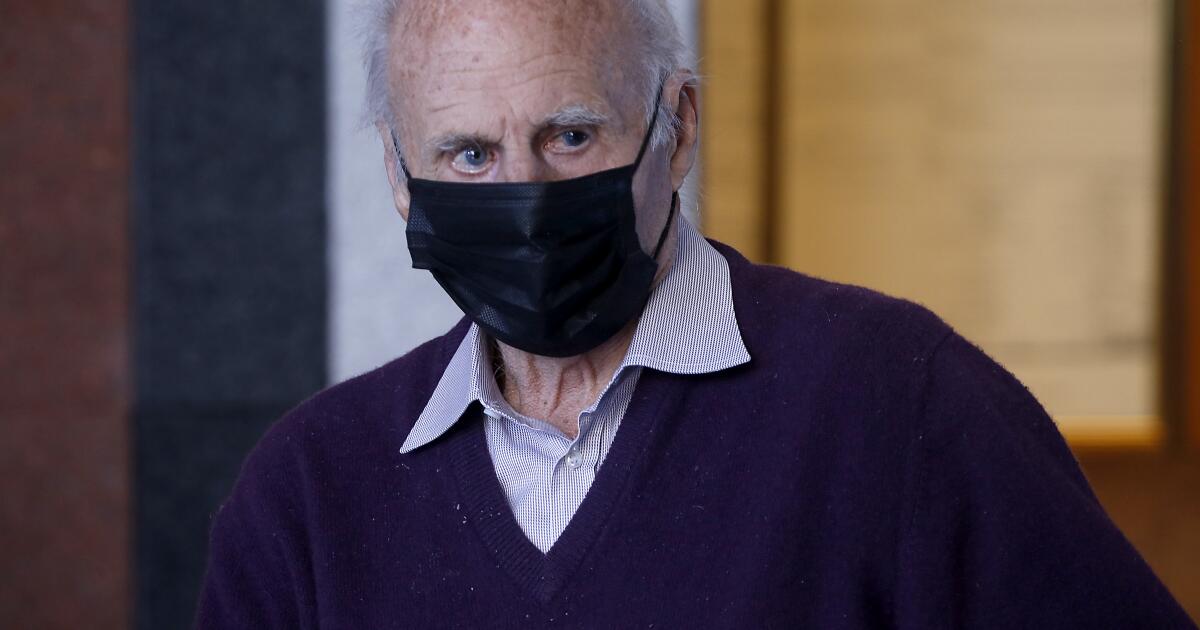In the summer of 2019, justice reformers celebrated when the Los Angeles County Board of Supervisors scrapped a controversial $1.7 billion plan to replace the county’s oldest jail — the dungeon-like Men’s Central Jail on Bauchet Street — with a jail-like mental health facility.
Spurred by a rising tide of prison reforms across the country, county leaders decided to focus on reducing the prison population by creating more alternatives to incarceration. The new goal would be to close the Men’s Central Jail without building a replacement.
Five years later, there are about 5,000 fewer inmates, but the Men's Central Jail remains open. And at the state level, the situation is changing, as voters are willing to consider increasing sentences for Petty theft and some drug-related crimesBoth measures could increase the prison population.
In this context, the junta appears to be rethinking its strategy of not building new prisons.
“The pendulum has swung,” Supervisor Holly Mitchell said at Tuesday’s board meeting. “We keep saying, ‘When are they going to close Men’s Central Jail?’ I think there needs to be a question: And what are we building or creating for this population that maybe community, diversion and pretrial settings can’t match?”
It’s a question supervisors have been unwilling to consider for the past five years, arguing they could reduce the jail population to zero without a new facility. But this week, the board publicly changed its tune after Sheriff Robert Luna and his top jail official told them that three-quarters of the county’s inmates face charges too serious for diversion programs.
“I felt like we finally got past the debate about why it’s necessary and the justification of why it’s necessary, because the numbers don’t lie,” Supervisor Kathryn Barger said in an interview. “There has to be a replacement.”
It is not yet clear what the county would replace the jail with or where it would locate the replacement.
For some justice reformers, the recent change of tone comes as a deep disappointment.
Claire Simonich, associate director of the nonprofit Vera California, questioned the department's claim that 75 percent of people in jails could not be diverted, as well as the notion that a new facility would solve problems currently plaguing county jails.
“Men’s Central Jail is decrepit,” he said. “Building another jail will not solve many of the problems and concerns we see at Men’s Central Jail, such as overdose deaths, inhumane treatment and inadequate mental health care.”
****
When the Men's Central Jail opened five decades ago, county leaders hoped the new capacity would end overcrowding and, in the process, improve worsening conditions at local jails. Instead, the facility has led to federal lawsuits, gangs of deputiesa far-reaching scandal that He took a former sheriff to prison and a persistent series of complaints from inmates, supervisory officers and community members.
But county leaders wavered in their response. Three years after agreeing The county needed to build a new jail, the board In 2018 approved a loan of $2.2–billion dollar plan To accomplish this, the existing facility will be demolished and replaced with a Consolidated Correctional Treatment Center focused on rehabilitation.
The following year, the board changed course and instead green-lighted a $1.7 billion project called Mental health treatment centerApproved on a 3-2 vote, the planned facility would have been overseen primarily by the Department of Health Services rather than the Sheriff's Department, though a limited number of deputies would have provided security.
“It is still a prison” Sipsupervisor Hilda Solís said at the time, opposing the plan“Walls still exist. They still prevent people from having freedom, even the possibility of rehabilitation.”
A few months later, the board scrapped the idea and started over, eventually adopting a “care first, jails last” philosophy along with a goal of tearing down the decaying jail and not building a new one. In 2021, the board approved an ambitious plan to reduce the number of people in custody by several thousand so the county could phase out the facility before closing it entirely.
But the planned closing date, early 2023, came and went, and the prison remains open. Last year, the The board presented a motion Several recommendations are outlined for reducing the population, but no concrete timeline for closure is offered.
Meanwhile, conditions have not improved. The county continues to deal with several long-standing class-action lawsuits alleging abuse, poor conditions and inadequate mental health care behind bars. The death rate in jails has risen dramatically in recent years.
And this year, inspections by the County Sybil Mark Commission have revealed Mold, rats, fires, broken toilets, sink drains filled with “little black worms” and cells covered in feces. In May, two inspectors found a large group of jailers watching a “sexually explicit” video instead of treating an apparently suicidal inmate who had He hung a rudimentary cloth rope in his cell..
****
The tenor of last week's board meeting signaled another change of direction in the county's response.
Although the agenda called for a discussion about the deteriorating conditions at the Men's Central Jail, the conversation quickly turned to plans for the facility's future.
Luna told supervisors he wasn’t sure the county could reduce its jail population enough to close the Men’s Central Jail without a replacement, in part because officials estimate that many inmates face charges that are too violent or serious for diversion programs. Instead, he suggested building what he called the “Care First Treatment Campus,” which he said wouldn’t necessarily be run by sheriff’s deputies.
Barger, the board's only Republican, seized on the suggestion as a path forward that could win support from his more progressive counterparts.
“Men’s Central Jail needs to be demolished no matter what,” Barger said at the meeting. “The fact that it doesn’t have to be a sheriff-run facility … maybe it’s opened a new door in terms of finally getting something done.”
Solis, historically one of the board's staunchest opponents of a new jail, was adamant that if another facility was built, it should not be in her area, which she said was already overwhelmed with prison facilities, including the Men's Central Jail and the Twin Towers downtown.
“Obviously, I don’t want to see another prison built,” he said. “But if the board decides to do it, it better not be in my district.”
Lindsey Horvath, the newest supervisor and one of the most progressive on the board, was skeptical of the concept, telling The Times she was not “familiar enough” with Luna’s vision to support it.
“I don't know of any facility run by the sheriff's department that isn't considered a jail,” he said in an interview.
****
The change sparked a swift backlash from justice reform advocates, community activists and some prison oversight officials.
“I was totally taken aback by that,” said Anthony Arenas, an organizer with Justice LA, who has long opposed the construction of new jails. “It will simply be Men’s Central Jail with a new name — a ‘Care First Treatment Campus,’ which is even more disturbing given that this idea of ‘care first, jails last’ came from community members who have advocated for closing Men’s Central Jail without replacement.”
During their meeting Thursday morning, members of the Sybil Brand Commission (a county oversight body that inspects local jails) criticized the idea of a “care-first” facility, saying that “care-first” is “not a thing” in the historically problematic culture of Los Angeles jails.
“This is not just a facilities issue,” Commissioner Haley Broder later told The Times, highlighting examples of abandonment and reprisaln by the jailers. “This is a cultural issue.”
AND Peter Eliasbergsenior attorney for the American Civil Liberties Union of Southern California, rejected the central claim that sparked the debate: the idea that three-quarters of the prison population cannot be diverted or released before trial.
“No one should believe that number is well founded,” he said. The county's Diversion and Reentry Office has managed to keep thousands of people, including some facing serious charges, out of jails, but It has never been adequately fundedhe said.
And a recent A UCLA study found that Los Angeles courts Inmates are setting bail amounts much higher than the state average. Simply lowering bail amounts, Eliasberg said, could help reduce the prison population.
“The claim that most of the jail cannot be diverted is 'absurd,'” he continued, adding, “If the board is thinking of making policy based on that statement, my father had a phrase that said, 'You're leaning on a weak reed,' and I think it's entirely appropriate here.”












